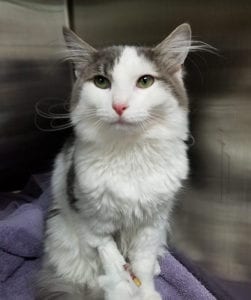Cat owners often present to Groveport Canal Animal Hospital with concerns
(1) Type of Litter,
(2) Number of Boxes,
(3) Location of Boxes,
(4) Size of Boxes,
(5) Frequency of Cleaning.
(1) Type of Litter: Manufactures of litter are marketing their products to sell to people. Unfortunately, what pet owners like and what cats like are often different. Cats have a sense of smell that is about 100 times greater than humans, so scented litters are often offensive to cats. Most cats prefer unscented litter. In fact, scented litters can cause respiratory problems
like asthma, in some cats. Many cats prefer low dust, unscented, clay or clumping litter.
(2) Number of Boxes: The recommended number depends on how many cats are in the household. Behaviorist recommend that you have one plus the number of cats in your home. For example, I have two cats and three litter boxes.
(3) Location: Cats like privacy, so when considering location choose multiple separate quiet locations. They prefer not to eliminate near their food and water. Older pets sometimes have trouble going up/down stairs, so having boxes on multiple levels of your home can help our senior felines. If your pet is going outside the litter box, temporarily or permanently place a litter box in that location.
(4) Size of Litter Box: Honestly, the bigger the better! Imagine trying to scrunch your body into a tiny space while eliminating. This is especially true for senior cats. Stepping into and eliminating in a tall and tiny litter box is actually quite painful for these guys. Often, we determine that when senior or arthritic cats are provided huge litter boxes with a door cut out
on one side (a one inch lip), they happily go back to using the box. For a heathy pain-free cat, the litter box should minimally be 1 and 1/2 times the length of your cat so they can easily go in, move, turn, scratch, and go.
(5) Frequency of Cleaning: Litter boxes should be scooped daily. The box should be sanitized with non-ammonia based or non-harsh cleanser every 1-4 weeks.
It’s always worth avoiding litter box battles. Face it, our feline friends have more weapons that we do when it comes to this battle. Let’s give them what they want and make it easy for them to choose using the box.
Call us at 614-836-3222 with any questions, we are here for you and your pet!

